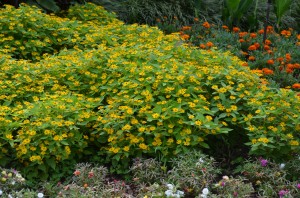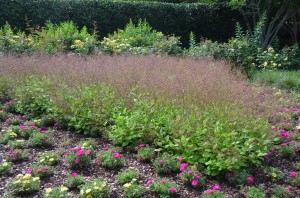Most weed invasions happen when you let the weeds get past you. If you don’t let them flower, they won’t reproduce (seed-in). Frequent mowing or a sharp machete may delay their ability to flower and seed. This is only a temporary solution. Some weeds flower and seed below the mower’s cut. Examples are common lawn weeds such as dandilion, field morning glory (bindweed), goosegrass, crabgrass, and white clover.
Favorite garden annuals and perennials may also become weedy nuisances. Some seed-in by the hundreds, overwinter, and germinate all over next spring’s garden. Perennials like summer phlox (Phlox maculata), black-eyed Susan (Rudbeckia), spiderwort (Tradescantia), tovara (Persicaria) and goldenrod (Solidago) can become serious invaders.
Annuals such as marigolds, celosia, verbena, and violas frequently come back often 2-3 years after they were excluded from the flower bed. Three of the worst are morning glory (Ipomoea tricolor), medallion flower (Melampodium) and Jewels of Opar (Talinum) which many Tennessee, Virginia, and North Carolina commercial landscapers have banned them from future clients’ plantings.
A third class are the winter annual weeds such as annual bluegrass, henbit, and common chickweed. Their seeds are dispersed by mid- to late-spring and germinate in cool fall-winter soils when plenty of moisture is available.
Chemical weed preventatives are available if you anticipate a weedy future. One of the active ingredients is Preen® (also called Treflan®). Apply before the targeted weed seeds germinate…early fall (October) or late winter (March).



 Posted in
Posted in 
